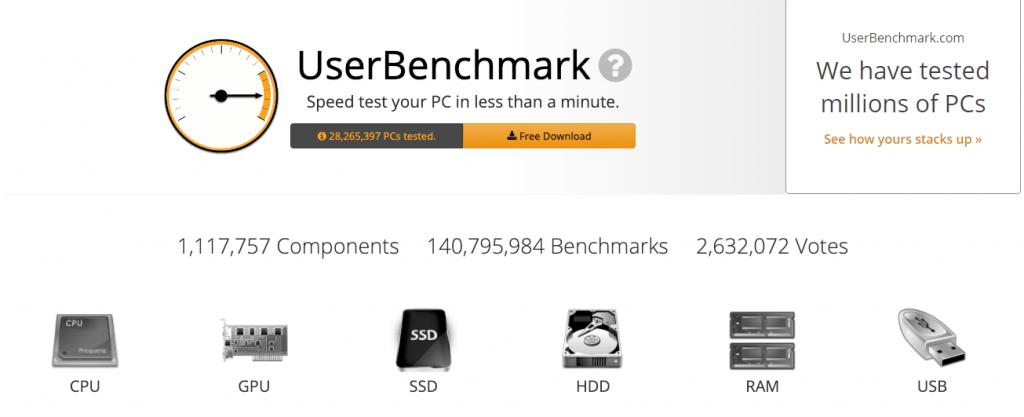

MIPS (million instructions per second).In encryption tests, GB/s measures data throughput. When converted to FPS to display alongside average FPS, higher is better.

When measured in milliseconds, lower is better. Otherwise, the frame rate’s pacing will be uneven, creating a stutter effect. Ideally, this measurement should be consistent. In in-game benchmarks tests, frame time (or frame pacing) counts the number of milliseconds between frames. (But frame time should also be taken into consideration). A higher FPS usually means refined gameplay. In in-game benchmark tests, FPS counts the number of frames rendered every second. In video encoding tests, FPS counts the number of frames your CPU encodes per second. A lower % of dropped frames is preferable. This can cause jumpy playback for viewers. In streaming benchmark tests, dropped frames counts the number of frames lost while encoding video. Real-world tests, on the other hand, use a range of different measurements. Use a test that reflects the way you plan on using your CPU. A higher-performance CPU is one that scores higher, though it’s important to remember different CPUs are designed for different purposes not all are gaming-focused. Scores are often measured in “marks” (or another program-specific term). In synthetic tests, the scoring system will vary by program.
#Cpu benchmark test how to
Now that you know about the various kinds of benchmarking tests, let’s look at how to read the scores. As long as your system configuration remains the same, the benchmarks give an accurate reading of the in-game performance you’ll get. These tests provide a repeatable test environment. Use in-game benchmarks to check the CPU’s effect on FPS (frames per second) during regular gameplay and also while streaming. These are non-interactive scenes that are available in some games. In-game benchmark tools are another type of real-world test.

Some commonly used applications for real-world benchmarking include: As a result, they provide a reliable preview of system performance when using the same settings. These tests are performed by giving real programs heavy workloads and then measuring the time it takes to complete.
#Cpu benchmark test Pc
Use real-world benchmarks when you have specific plans in mind for your PC and need an accurate indication of performance for particular applications. Intel® Extreme Tuning Utility (Intel® XTU)stress tests CPUs in addition to overclocking them and monitoring their function.Įach of these applications feature a database of scores ranking many CPUs, making it easy to compare the relative power of processors at a glance.PCMark 10 scores the system on how well it can deal with business workflows and day-to-day productivity tasks.



 0 kommentar(er)
0 kommentar(er)
